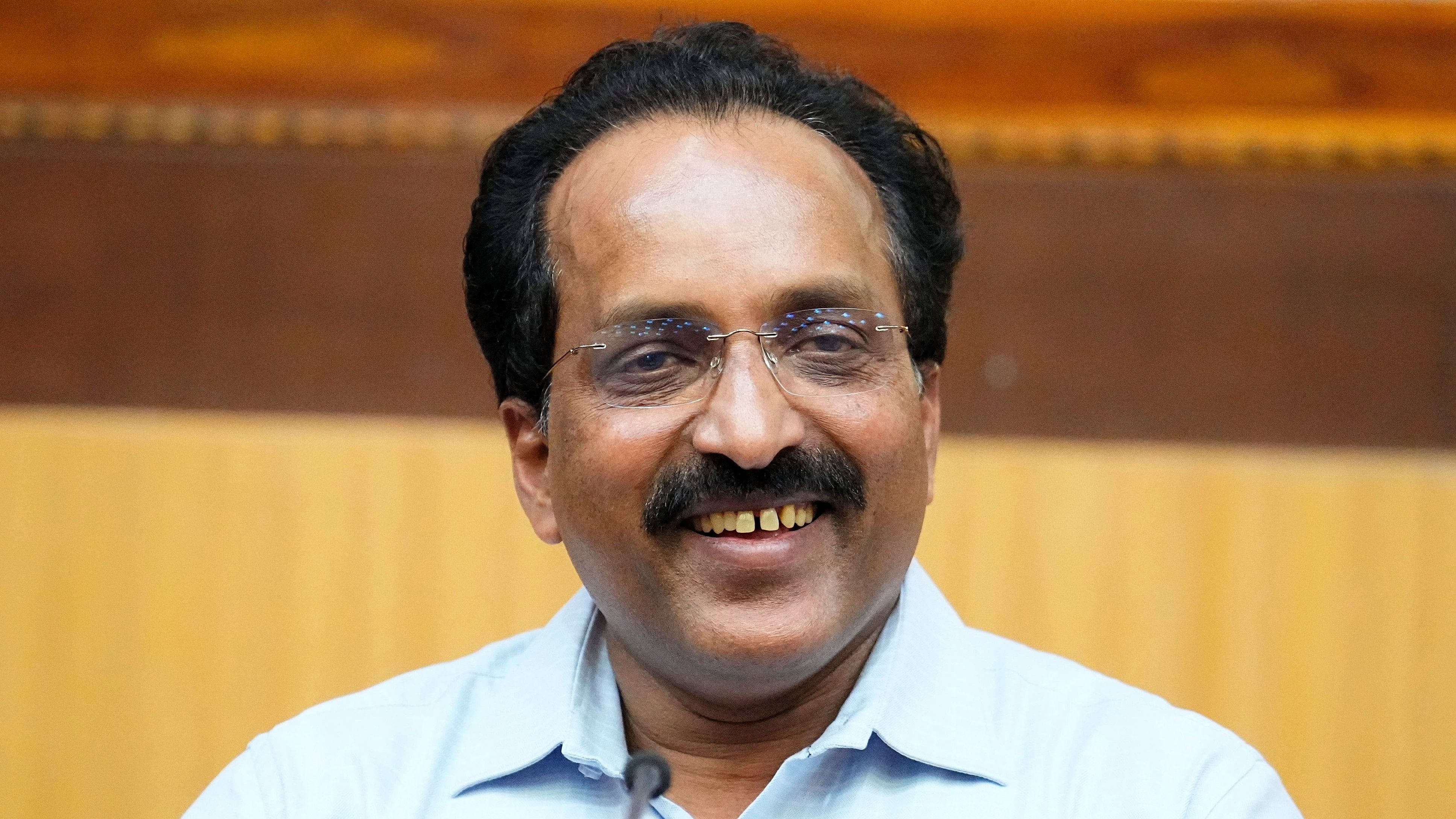
ISRO Chairman S Somanath.
Credit: PTI File Photo
The Indian Space Research Organisation is set to develop a very large lander module capable of carrying a 350 kg rover – 14 times heavier than the Pragyaan rover used in the Chandrayaan 3 mission – to the lunar surface, aiming to demonstrate technologies needed for human landing on the moon, ISRO chairman S Somanath said here on Saturday.
This will be for the upcoming Indo-Japan Lunar Polar Exploration (LUPEX) mission, also known as Chandrayaan-5, that is tentatively scheduled for a 2028 launch.
The high-capacity lander and its touch down – if successful - with such a big rover will be a proof of ISRO’s ability to master critical technologies that are essential for future human landing on the moon. India plans to send a human to the moon by 2040.
“The rover’s weight will be 350 kg. Our job is to put it on the lunar surface. For that we will have to develop a lander. We need new engines, new propellant tanks, new stereo control and new landing systems. The launch schedule will be around 2028,” Somanath said.
He said the lander for Chandrayaan-5 would mark a “significant improvement” in the capacity compared to the Chandrayaan-3 where the rover weighed 25 kg.
“The mission will demonstrate critical technologies that are essential for future human landing on the moon such as precise landing, enhanced lander payload capacity, capability of long duration on lunar surface and in-situ sample analysis,” Somanath said.
The mission will investigate the “quantity and quality” of water available on the moon and the data will provide a basis for considering sustainable human activities on the moon in the future, the Japanese Aerospace Exploration Agency says in a statement.
The launch vehicle needed for the mission will be provided by the JAXA and the two nations will operate on a “work-share” arrangement. There will not be any transfer of funds to Japan.
On the long awaited NASA-ISRO Synthetic Aperture (NISAR) mission, Somanath said a key part of the satellite that was sent to the USA for some rectification, was back in India. “The ISRO has started testing various components and we plan a launch in February 2025,” he said.
Last March, the radar antenna reflector of the satellite was transported back from India to a specialized facility in California, where reflective tape was applied and other precautionary measures were taken to mitigate temperature increases that could have potentially affected the deployment of the reflector from its stowed configuration before beginning science operations.
One of the costliest satellites ever built, the NISAR will scan nearly all the planet’s land and ice surfaces twice every 12 days to collect science data.
The ISRO will soon launch a technology demonstrator payload to test home-grown electric propulsion methods that can drastically cut down the fuel load of a rocket. “The primary advantage will be lowering the launching cost,” he said.
Delivering the Sardar Patel Lecture at Akashvani, Somanath said the first Technology Demonstrator Satellite (TDS-01) using indigenously developed electric propulsion will be launched in December.
